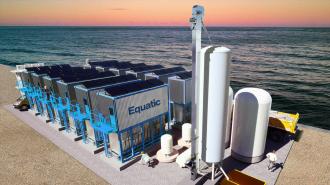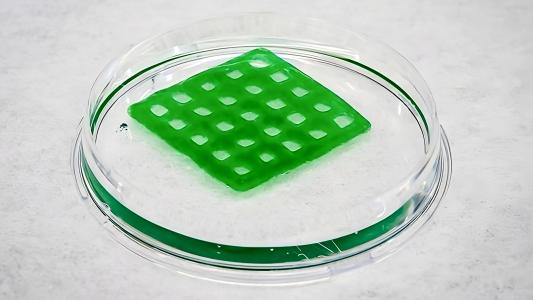UCLA spinout Equatic has developed a carbon removal technology it believes can help the world meet its climate change goals — by converting CO2 in the ocean into seashell dust.
The challenge: To prevent the worst predicted effects of climate change, experts say we need to not only slash our carbon emissions, but also remove and permanently store some of the CO2 that’s already been released.
The ocean does this naturally: it already absorbs about 31% of human-made carbon emissions, but there’s a limit to the amount of CO2 that seawater can absorb before it starts to release the carbon back into the atmosphere. Absorbing CO2 from the air also causes ocean acidification, resulting in further environmental damage.
“The world has two unprecedented challenges … Equatic’s first-of-its-kind technology solves both.”
Lorenzo Corsini
The idea: Equatic has developed a carbon removal technology that pulls CO2 from seawater and converts it into a solid mineral that is basically the building block of seashells — this material can be dumped back into the ocean or sold for use as a construction material.
The process frees the ocean to draw more carbon out of the atmosphere, and as a bonus, it also generates hydrogen, a green fuel.
“The world has two unprecedented challenges: how to remove and permanently store gigatons of carbon dioxide and how to reduce our reliance on fossil fuels,” said Lorenzo Corsini, principal advisor at Equatic. “Equatic’s first-of-its-kind technology solves both.”
How it works: Equatic’s carbon removal technology first draws in seawater and then runs an electric current and air through it. This triggers a reaction that creates calcium carbonate (the seashell mineral), dissolved bicarbonate ions (CO2-storing molecules in water), and hydrogen gas.
After this process, the seawater becomes more acidic, so Equatic runs it over crushed rocks to restore its pH balance before releasing it back into the ocean.
What’s new? Equatic has already secured $30 million in grants and investments from the US Department of Energy, the National Science Foundation, and others, and it is currently running two pilot facilities, one in LA and the other in Singapore.
Those facilities are each capable of removing 100 kilograms of CO2 from the ocean daily — that’s only the equivalent of offsetting about 250 miles of driving in the average gas-powered car.
“We have shown that the technology works, but the key now is to optimize the technology at scale.”
Gurdev Singh
However, on September 5, PUB, Singapore’s national water agency, announced that it was aiming to secure funds before the end of 2024 to build a demonstration plant around Equatic’s carbon removal technology.
That plant would have a CO2 removal capacity of 10 tons per day, or 25,000 passenger car miles.
“We have shown that the technology works, but the key now is to optimize the technology at scale,” Gurdev Singh, the PUB general manager leading the project, told Reuters.
The big picture: The planned expansion in Singapore is great news for Equatic, but climate experts say we need to be removing 10 gigatons (Gt) of CO2 annually by 2050. That averages out to 27 million tons every day, and by 2100, we will need to double the rate of removal.
“[It’s] the most promising solution for scalable decarbonization — cost-effectively and at a globally-relevant scale.”
Lorenzo Corsini
Ultimately, that means the world needs to really scale up carbon removal over the next few decades, and that’s only going to happen if someone can figure out an economically viable way to do it — experts say the cost needs to be below $100 per ton.
Equatic is confident that its ocean-based approach is commercially viable, given that the density of carbon is higher in the ocean than the air and the byproducts of its process can be sold along with carbon credits. By 2028, with larger scale plants, it expects to be removing carbon for less than $91 per ton.
Looking ahead: In May, Equatic signed a pre-purchase agreement option with Boeing to remove more than 63,000 tons of CO2 from the ocean and deliver 2,300 tons of hydrogen to the company. Its goal is to remove 100,000 tons of CO2 annually by 2026 and unspecified millions of tons per year by 2028.
“[Our system] combines basic principles of chemistry with the natural capabilities of the world’s best carbon removal tool, the ocean, to create the most promising solution for scalable decarbonization — cost-effectively and at a globally-relevant scale,” said Corsini.
We’d love to hear from you! If you have a comment about this article or if you have a tip for a future Freethink story, please email us at [email protected].






